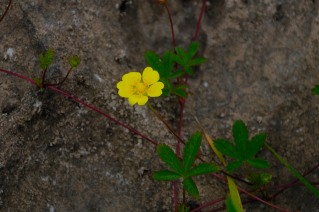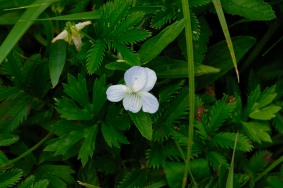
This weekend the media is dominated by accounts of the Easter Rising in Ireland which occurred 100 years ago. This blog focuses on a shared piece of Welsh and Irish human and environmental history with a revolutionary water undercurrent.
I am sure my Irish history school books told me about Frongoch, near Bala in North Wales, where Irish rebels were interned after the Easter 1916 Rising. But I am afraid I did not rediscover this story until I came to live in Wales to work as a freshwater ecologist.
While driving along the road between Bala and Trawsfynydd, through Frongoch and past Llyn Celyn, my colleague, Tim, told me the history of Llyn Celyn, a controversial reservoir built in the 1960’s to supply water to Liverpool. Political analysts believe that the damming of the Afon Treyweryn to create this development, with the loss of a Welsh speaking community, lead to the evolution of the distinct Anglo-Welsh politics which continues today. Despite protests on the streets of Liverpool, the dam was constructed. At the reservoir opening ceremony members of the illegal Free Wales Army, who would also attend the fiftieth anniversary of The Rising in Dublin, protested by parading in uniform for the first time. The common Celtic history of oppression and protest resonated with me.
But the Frongoch area has generated other historic freshwater connections between Wales and Ireland extending back to a shared appreciation of whisky. In the late 1880’s R.J. Lloyd Price, owner of the large local Rhiwlas Estate, saw the Afon Tryweryn and its tributary Tai’r Felin as a source of water and power to produce whisky to rival Scottish and Irish spirits. The Welsh Whisky Distillery Company was established and a large distillery building was built at Frongoch. The poetic publicity claimed it to be:
“….the most wonderful whisky that ever drove the skeleton from the feast, or painted landscapes in the brain of man. It is the mingled souls of peat and barley, washed white within the rivers of the Tryweryn.”
However the whisky connoisseurs were very disappointed with the quality of the product, describing it as raw, crude and practically flavourless. In 1899 the company was wound up and the distillery building was sold. But it has also been reported that the whisky business benefited the Tryweryn trout who were thought to have thrived on the mash of barley and hot water that was discharged into the stream.
The Frongoch distillery building was eventually bought by the government and at first used as a holding camp for captured German prisoners in 1914. On arrival the Irish detainees compared the surrounding landscape of mountains with their homes, and were very impressed to discover the local Welsh population speaking their native language. Although a German sign, Trinke Wasser, drinking water, was still in place, signs in Irish were not allowed, but Irish and Welsh classes were subsequently incorporated into the camp curriculum.
It is difficult to read about the misery endured by the Irish prisoners in Frongoch – deep mud, extreme cold and damp in winter; trying to sleep in oppressive and suffocating heat in grain drying rooms with rats during the summer. Despite the abundance of water, conditions were unsanitary. Food quality was very poor, mainly black bread and potatoes. The severe conditions were reflected in cases of scurvy, Sciatica, tuberculosis, a flu outbreak, and severe mental illness. The camp medical doctors, local Welshmen Dr. David Peters and his nephew, Dr. R.J. Roberts, were caught between following camp rules and restrictions, and their duty to care for their patients. It was an absolute tragedy when Dr. Peters was found drowned in the Tryweryn.
I am relieved to say that none of my Irish family were interned in Wales but I think of my countrymen every time I drive through this area. Their family and supporters also made considerable journeys to visit them. Notable visitors included Margaret Pearse, mother of Padraig and Willie Pearse, and her daughter Margaret, and Mary sister of Terence MacSwiney.
It was also ironic to discover that the most recent record of a transitory Irish population in this area were the labourers who helped to build Llyn Celyn Reservoir.
Remember Frongoch, Cofiwch Dryweryn, remember Ireland.
Easter 1916. Easter 2016.
Main source: Ebenezer, L. (2006). Fron-Goch and the birth of the IRA. Gwasg Carreg Gwalch.



 Cape Clear: “We also met an aged donkey who spent most of his time between feeds “stretched” on the ground – he too, past serving his master. All the animals encountered were very forthcoming, evidently regarding humans as friends. Or did they know that the likes of us, furnished with binoculars, were unlikely to put them to work.”
Cape Clear: “We also met an aged donkey who spent most of his time between feeds “stretched” on the ground – he too, past serving his master. All the animals encountered were very forthcoming, evidently regarding humans as friends. Or did they know that the likes of us, furnished with binoculars, were unlikely to put them to work.” The Aran Islands: “Donkeys ranged freely over rocks, dunes and beaches, serving their master well as mounts or when their paired wicker panniers were laden with seaweed, potatoes or rye. Some hauled small jaunting carts with stores from the pierhead at Killeany.”
The Aran Islands: “Donkeys ranged freely over rocks, dunes and beaches, serving their master well as mounts or when their paired wicker panniers were laden with seaweed, potatoes or rye. Some hauled small jaunting carts with stores from the pierhead at Killeany.” halt and he turned to us with a self-satisfied smile, knowing he had the upper hand.It took quite a while for Mairead to push him out of the way, one end at a time, after which he trust his head through the driver’s window to seek a reward for being so accommodating. There is something endearing and stubbornly Irish about Irish donkeys, even when they filch the apple from the hand before the first bite has been taken.”
halt and he turned to us with a self-satisfied smile, knowing he had the upper hand.It took quite a while for Mairead to push him out of the way, one end at a time, after which he trust his head through the driver’s window to seek a reward for being so accommodating. There is something endearing and stubbornly Irish about Irish donkeys, even when they filch the apple from the hand before the first bite has been taken.”




